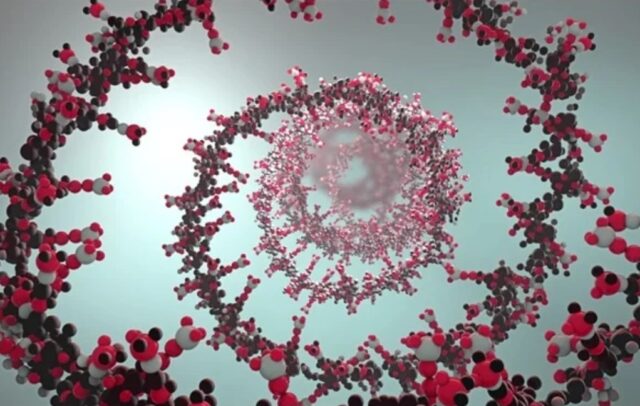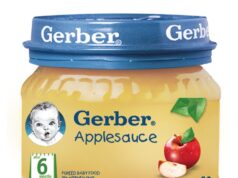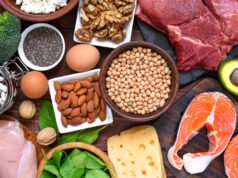The Food and Drug Administration (FDA) does not require that food labels list the content of nucleic acids. This is because nucleic acids are not nutrients, but rather they are the building blocks of DNA and RNA.
Nucleic acids are not on nutrition labels because they are not nutrients. They are the building blocks of DNA and RNA, which are used to store genetic information.
Despite their importance as a macromolecule, nucleic acids are not included in the food pyramid or on any nutrition label. This is because they are present in everything we consume that was once alive, and eating them has no effect on our genetic information or our ability to help or harm us in any manner.
Why, therefore, are nucleic acids not found in foods?
Because it was widely assumed that living organisms, including humans, could synthesize adequate amounts of the compounds required for normal growth and development and that dietary sources were not required, nucleic acids and/or their components in the diet were not considered essential for normal growth and development.
Similarly, why must we consume nucleic acids? Deoxyribonucleic acid, or DNA, and ribonucleic acid, or RNA, are nucleic acids that encode genetic information and enable humans and other creatures to follow their genetic instructions. You may also pass on your genetic information to your children via nucleic acids.
What are the sources of nucleic acids in your diet?
Nucleic Acids in Food Plant storage tissues, such as grains or potatoes, have less DNA and RNA because they have fewer cell nuclei. Bacteria, yeasts, and mushrooms have the greatest DNA and RNA concentration, which is associated with rapid growth.
Are there calories in nucleic acids?
About 1.5 calories may be obtained from nucleic acid, which comprises 20% purine by weight. This would reduce their caloric worth in the body to approximately 1.5 calories per gram.
Answers to Related Questions
What are the different types of nucleic acids?
The fundamental framework
Polynucleotides, or long chainlike molecules made up of a sequence of almost similar building components called nucleotides, make up nucleic acids. A nitrogen-containing aromatic base is linked to a pentose (five-carbon) sugar, which is then bonded to a phosphate group in each nucleotide.
Is it true that broccoli contains nucleic acids?
Vegetables: A healthy complement to any diet, according to a research published in the journal Nucleic Acids Research in January 2018, vegetables, especially Chinese cabbage, cauliflower, spinach, beans, and broccoli, may be rich in nucleic acids.
What kinds of nucleic acids are there?
Deoxyribonucleic acid (commonly known as DNA) and ribonucleic acid are two types of nucleic acids (better known as RNA). Long strands of nucleotides are bound together by covalent connections in these molecules. Nucleic acids may be present in our cells’ nucleus and cytoplasm.
Are nucleic acids found in all foods?
Cells make up all of the food we eat from plants and animals, and each cell contains a nucleus holding DNA and RNA. Fruit, vegetables, meat, fish, poultry, nuts, beans, seeds, and whole grains are all made up of cells, with nucleic acids present in all of their nuclei.
What are nucleic acids and what do they do?
Nucleic acids are responsible for the storage and expression of genetic information. The information a cell needs to produce proteins is encoded in deoxyribonucleic acid (DNA). Ribonucleic acid (RNA) is a similar kind of nucleic acid that participates in protein synthesis in many molecular forms.
Is it true that milk contains nucleic acids?
Nucleic acids (mostly RNA) and nucleotides are also found in milk.
Are nucleic acids present in eggs?
Because eggs are intended to supply nourishment for gestating life, they are a natural source of nucleic acid. Again, this refers to protein, and eggs contain 6.3 grams. Eggs contain more than just nucleic acids; they also include the amino and nucleic acids that humans need.
What is the source of nucleic acids?
Enzymes (DNA and RNA polymerases) and solid-phase chemical synthesis are also used in the laboratory to produce nucleic acids. Chemical techniques may also be used to create modified nucleic acids that aren’t present in nature, such as peptide nucleic acids.
Is it true that peanut butter contains nucleic acids?
Nucleic Acid may be found in a variety of protein-rich meals. Beef and peanut butter are examples of these foods.
Is DNA a protein or a molecule?
DNA, on the other hand, is not a protein.
They utilize different subunits, which is the distinction. Protein is a polypeptide, while DNA is a polynucleotide (peptide bonds link amino acids). Proteins are molecular machinery, similar to robot arms, while DNA is a long-term data storage, similar to a hard drive.
Is butter considered a nucleic acid?
The lipid group of chemical substances includes steroids and certain vitamins. 9. The nucleic acids RNA and DNA are present in cells. Lipids include things like butter, oil, and wax.
What method do you use to check for nucleic acids?
The STD test is not based on the technique of amplifying bacterial or viral nucleic acids. Instead, after increasing the quantity of DNA or RNA in a sample using PCR or LCR, more traditional assays are performed to identify it. Nucleic acid hybridization is frequently used in these assays.
Is it possible to exist without nucleic acids?
Without DNA, life would be impossible. RNA is like DNA to certain viruses in that it is required for survival. Ribonucleic acid is the abbreviation for Ribonucleic acid. It’s a kind of nucleic acid found in all living things.
What are the benefits of proteins?
Proteins are huge, complex molecules that perform a number of important functions in the human body. They are essential for the construction, function, and control of the body’s tissues and organs, and they perform the majority of their activity in cells. Enzymes are responsible for almost all of the hundreds of chemical reactions that occur in cells.
What would happen if nucleic acids were not present?
Living creatures would not be able to reproduce without DNA. Furthermore, plants and animals could not divide through mitosis or exchange genes via meiosis. Without DNA, most cells would cease to exist.
Is ATP considered a nucleic acid?
The nucleic acid molecule adenosine triphosphate (ATP) is a single nucleotide. The ATP nucleotide contains three phosphate groups linked to its ribose sugar, unlike DNA or RNA nucleotides.
Are nucleic acids present in strawberries?
While other fruits are soft and simple to pulverize, strawberries are ideal for a DNA extraction lab for two reasons: (1) they produce much more DNA than other fruits, and (2) they are octoploid, which means they contain eight copies of each DNA chromosome.
What is a nucleotide consist of?
A nucleotide is made up of three parts: Adenine, guanine, cytosine, or thymine are nitrogenous bases that may be used in DNA (in the case of RNA, thymine is replaced by uracil). Deoxyribose is a five-carbon sugar that lacks an oxygen group on one of its carbon atoms. There may be one or more phosphate groups.
The why are nucleic acids important is a question that has been asked for years. It’s not just about the food label, it’s also about the health of the consumer.
Frequently Asked Questions
Can nucleic acids be found in food?
What are nucleic acid in nutrition facts?
Nucleic acids are a class of organic compounds that contain deoxyribose nucleic acid (DNA) and ribonucleic acid (RNA). They are essential for cell function, carrying genetic information through replication.
What is not on a nutrition label?
The nutrition label is typically found on food packaging, and it includes information about the products ingredients.




